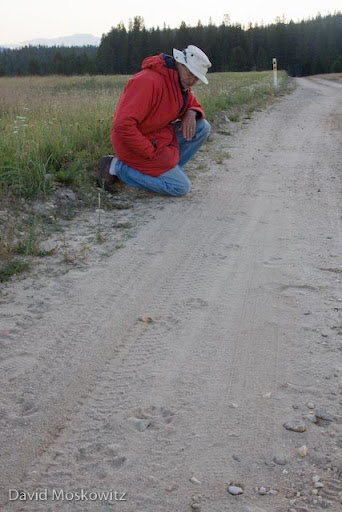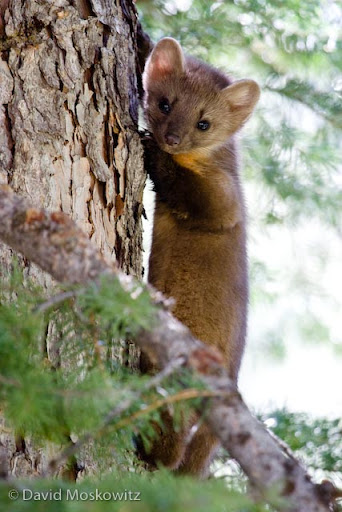Text and photos by David Moskowitz Caribou are not the only animal tough to track down in the Caribou Rainforest ecosystem. As part of our efforts to tell the story of all of the creatures that call these mountains home, I have been setting camera traps this winter in collaboration with Swan Valley Connections in northwestern Montana and the Yellowstone to Yukon Conservation Initiative in the panhandle of Idaho this winter to capture images of some of the rare and elusive carnivores that depend on this wild landscape. Here are a few images from this winter field work and some out-takes of images from the camera traps.
Anything unusual about this snowmobile packing job? Researchers in Idaho and Montana are using beaver carcasses or deer legs as attractants to lure rare carnivores like Canada lynx and wolverines to bait stations set up with hair snagging devises to collect genetic samples from animals without ever having to see or handle the animals. I’ve been hitching a ride out into the field with researchers and setting up my camera traps adjacent to their bait stations.
Cody Dems (left) and Adam Lieberg set a bait station in the Mission Mountains of Montana.
Cody inspecting the fresh trail of a wolverine in Montana.
A Canada lynx enjoys some sunshine in a photo from one of my camera traps in Montana. Got many photos of this fellow in this beautiful subalpine forest. Its been many decades since caribou roamed these forests but lynx continue to call these mountains home.
A photo bombing snowshoe hare set up in front of another camera in the Selkirk Mountains in Idaho.
An American marten takes in a snowy night at the same camera trap as the snowshoe hare above.
Learn more about the Mountain Caribou Initiative here. Stay tuned for the trailer for our forthcoming film which should be out this spring. For updates on the film and other material forthcoming from the project, sign up for quarterly emails on the About page of my website.















